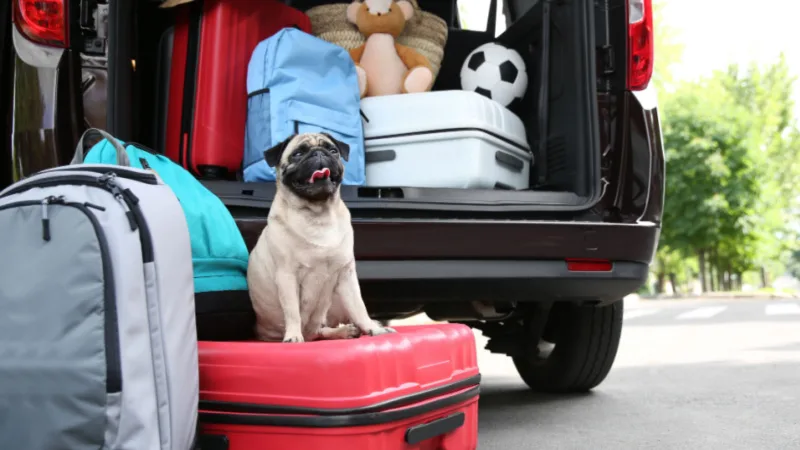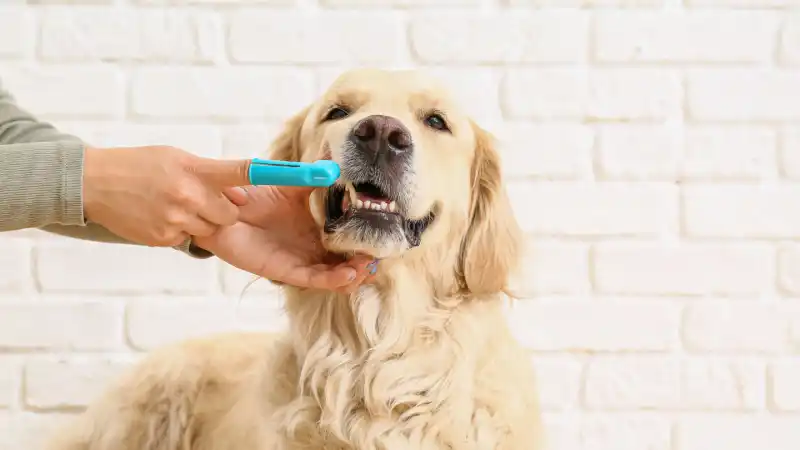How to Reduce Motion Sickness in Dogs
Motion sickness can be as tough on the owner as it is the dog. Here are 5 tips for reducing motion sickness and getting your dog comfortable in the car.

Does the thought of taking your pet in the car make you nauseous? If you’re a pet owner with a dog who gets motion sickness, you probably answered “Yes.” Most dogs love riding in the car, but for others, car rides can lead to some very unpleasant side effects that cause the dog to feel sick and their owners to stress out.
Symptoms of Dog Motion Sickness
Signs of motion sickness in dogs include lip smacking, salivating, panting, trembling, vocalizing, vomiting, or diarrhea. The combination of symptoms can lead to a very stressful and messy ride for both the dog and their owner. This can take away the joy of an adventure with your dog, like going to the beach or out for a hike. In some cases, a dog will develop a learned behavior and will not want to get in the car, causing another roadblock for their owner.
Fortunately, there are many things we can do to help create a more comfortable and rewarding experience for both dog and owner. First, you need to determine whether your dog is having motion sickness or anxiety in the car, as they share similar symptoms, but differ in treatment.
Motion sickness is an actual medical issue that includes nausea and gastritis, while anxiety is a behavioral concern. Some dogs will develop car ride anxiety if they know they will become motion sick. And, other dogs will experience nausea and vomiting if they get too anxious. So, it can take a bit of investigation on the dog owner’s part to determine the root cause.
Diagnosing Motion Sickness
Motion sickness has to do with the balance apparatus (vestibular system) in a dog’s inner ear. It can occur at any age, but happens more commonly in puppies and younger dogs because structures within the vestibular system are not fully developed. Fast moving cars and objects whizzing by can lead to dizziness and the unfortunate side effects.
The best way to diagnose motion sickness is to attempt treatment, as there is no diagnostic test. You should discuss which treatment option is best for your pet with your primary care veterinarian. Anti-nausea medications such as Cerenia (a prescription medication) or motion sickness antihistamines may be used. These medications are typically given a few hours before travel and if symptoms do not occur with the pre-treatment, then a diagnosis of motion sickness will be made.
5 Tips for Reducing Motion Sickness
No Food Before Car Rides
Once a diagnosis has been made, there are many things a pet owner can do at home to help prevent motion sickness. One easy step you can take is to NOT feed your dog before getting in the car. Try feedings at least 3-4 hours before travel. The less food they have in their tummy and intestines, the less likely they are to feel sick. A small amount of water though, before travel, may help settle their stomach.
Avoid Sensory Overload
Decreasing your pet’s view of the traffic or having the dog face forward will help decrease motion sickness. Placing smaller to medium-sized dogs in a crate, that is secured to the seatbelt, will help decrease the view and keep the dog from moving around. It also has the advantage of containing any vomit, should they get sick.
A dog seatbelt can also be used to prevent movement and force the dog to sit facing forward. If possible, use the middle seat in the back of the vehicle, as airbags can cause injury in the case of an accident. In fact, whether or not a dog suffers from motion sickness, all dogs should be in a secure place while traveling in a car to prevent injury and dangerous driving distractions.
Keep the Windows Down
Another tip is to lower the windows a few inches at the beginning of the car ride to help equalize the air pressure inside and outside of the car. This may help make your dog more comfortable. Also, keep the car cool and have good air circulation, as a hot stuffy car can lead to discomfort and exacerbate nausea.
Get Your Dog Used to the Car
Desensitization helps some pets with motion sickness. The first step is just getting them comfortable in the car, in either their seat belt or carrier. Start the car, but don’t go anywhere for the first few times. Then, start making short trips of 5 minutes and gradually building the length of the trips in 5–10-minute intervals.
Try Calming Treats
There are various treats you can try, such as Ark Naturals Happy Traveler, that include natural ingredients known to calm the mind and ease nausea. You can even create your own home remedy using diluted essential oils.
To make a safe essential oil blend for your dog, start with a 2 oz. glass bottle and fill it almost all the way with a carrier oil, such as almond oil or fractionated coconut oil. Then, add 2 drops each of ginger, cardamom, and lavender essential oils. Approximately 2 hours before you need to put your dog in the car, apply a few drops of the blend to your hand. Then, rub the top of your dog’s head and behind their ears with your hands. This can help to settle both your dog’s mind and their stomach.
Some Dogs Need Medication
Some dogs, despite your efforts at home, will still get motion sickness. These patients will require anti-nausea medication so that they can take road trips in comfort. There are many different types of medication that can be effective. Some are over-the-counter and others are prescription. It is best to discuss your dog’s symptoms with your veterinarian to determine whether an over-the-counter motion sickness medication is likely to be effective or if prescription strength is needed.
Motion sickness is frustrating for pets and their people. It often requires a combination of medical and at-home strategies before a dog with pronounced motion sickness will be able to enjoy, or at least tolerate, a ride in the car.
Take some of the stress out of motion sickness with Accident & Illness Coverage from AKC Pet Insurance (underwritten by Independence American Insurance Company). Our dog pet insurance plans are designed to be there when you need them, allowing you to focus more on the health of your pet and less on costly veterinary bills. Click here for a quote today!
Dr. Preston Turano graduated from the University of Illinois College of Veterinary Medicine in 2002. Since that time, he has been a Veterinarian, Medical Director, and Practice Owner.
READ MORE ARTICLES

